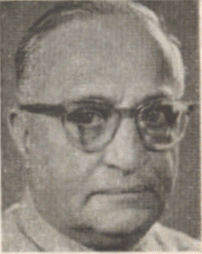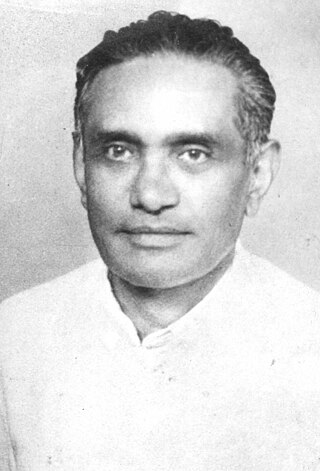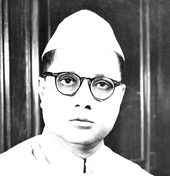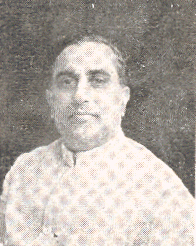The Indian Republic held its first elections in 1951–52.

Cheppudira Muthana Poonacha was the Chief Minister of Coorg, Minister in Mysore State, Member of Parliament, Union Railway Minister of India and Governor of Madhya Pradesh and Governor of Orissa.

The 1952 Madras State Legislative Assembly election was held on 27 March 1952 to elect all 375 members of the Legislative Assembly of Madras State. They were the first elections held in the state following Indian independence. Although voting was held in 1952, the Election Commission of India officially designated it as taking place in 1951.
The second legislative assembly election to the Madras state was held on 31 March 1957. This was the first election held after the linguistic reorganisation of Madras State in 1956. Indian National Congress and its leader, K. Kamaraj won the election and defeated their rival, Dravida Munnetra Kazhagam. In 1954, due to the resignation of C. Rajagopalachari, for his controversial Kula Kalvi Thittam, the leadership of Congress was contested between K. Kamaraj, and C. Subramaniam. Eventually, K. Kamaraj, won the support of the party, was elected leader and chief minister of Madras State in 1954. In a surprise move, he appointed both M. Bhaktavatsalam and C. Subramaniam, to his cabinet, allowing great unity amongst the Congress that ruled the state of Madras, for the next decade. This election saw future DMK leaders M. Karunanidhi and K. Anbazhagan win their first MLA seats in the legislative assembly.

Coorg State was a Part-C state in India which existed from 1950 to 1956. When the Constitution of India came into force on 26 January 1950, most of the existing provinces were reconstituted into states. Thus, Coorg Province became Coorg State. Coorg State was ruled by a Chief Commissioner with Mercara as its capital. The head of the government was the Chief Minister. Coorg State was abolished on 1 November 1956 as per the States Reorganisation Act, 1956 and its territory was merged with Mysore State. Currently, Coorg forms a district of Karnataka state.

The 2012 Gujarat Legislative Assembly elections were held in the Indian state of Gujarat in December 2012 for all 182 members of the Gujarat Legislative Assembly. Incumbent Chief Minister Narendra Modi of Bharatiya Janta Party (BJP), in power since 2002, was running for his fourth term. The leader of the opposition was Shaktisinh Gohil of the Indian National Congress (INC).

Elections to the Legislative Assembly of the Indian state of Hyderabad were held and Sri Burgula Rama Krishna Rao took oath as First Chief Minister of Hyderabad State on 6 March 1952. 564 candidates competed for the 175 seats in the Assembly. There were 33 two-member constituencies and 109 constituencies single-member constituencies.

Gundugutti M. Manjanathaya was an Indian freedom fighter and politician. Born as G. M. Manjanath, on 2nd June, 1904, he was a prominent coffee planter and lived in the village of Gundugutti in Somwarpet taluk in Kodagu district.
Pandyanda I. Belliappa was a Gandhian, a freedom fighter and politician from the erstwhile state of Coorg.

Elections to the Legislative Assembly of the Indian state of Mysore were held on 26 March 1952. 394 candidates contested for 99 seats in 80 constituencies in the Assembly. There were 19 two-member constituencies and 61 single-member constituencies, accounting for 99 seats.
Elections to the Andhra State Legislative Assembly were held on 11 February 1955. 581 candidates contested for the 167 constituencies in the Assembly. There were 29 two-member constituencies and 138 single-member constituencies. The members of the first assembly (1955–62) were allowed a seven-year term. That is to say, in 1957, elections were conducted in the newly added region of Telangana alone, and then in 1962, general elections were held for the state as a whole.
The Coorg Legislative Assembly was a legislative body which introduced laws for Coorg State from 1950 to 1956. It had its origins in the Coorg Legislative Council established on 26 January 1924 as a representative body of the Chief Commissioner's province of Coorg. When the Constitution of India came into force on 26 January 1950, the name of the body was officially changed to Coorg Legislative Assembly. The first and only general election to the assembly took place in 1952. It was eventually dissolved in 1956 when Coorg State was merged with the neighbouring Mysore State.

Elections to the Mysore Legislative Assembly were held on 25 February 1957. 589 candidates contested for the 208 seats of the 179 constituencies in the Assembly.
Elections to the second Rajasthan Legislative Assembly were held in 1957.
On 4 February 2008 a by-election was held in for the Simaria (SC) seat of the Legislative Assembly of the Indian state of Jharkhand. The by-election was called after the death of the sitting MLA Upendra Nath Das.

The 2018 Chhattisgarh Legislative Assembly election was held to elect members to the Legislative Assembly of the Indian State of Chhattisgarh. The election was held in two phases for a total of 90 seats; the first for 18 seats in South Chhattisgarh on 12 November 2018, and the second for the remaining 72 on 20 November.

Nidemane Somana was an Indian politician and lawyer. He was an Indian National Congress leader in Coorg State and served as the Member of Parliament for the state in the first legislature after the independence of India.
Coorg was a constituency of the Lok Sabha. It was used in the parliamentary election of 1951–1952. The constituency elected a single member of the Lok Sabha and was the sole Lok Sabha seat for the Coorg State. As of 1952, the constituency had 94,593 eligible voters.

The 2019 Andhra Pradesh Legislative Assembly election were held in the Indian state of Andhra Pradesh on 11 April 2019 for constituting the fifteenth legislative assembly in the state. They were held alongside the 2019 Indian general election.













